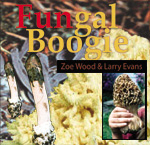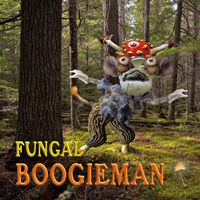Dried mushrooms are a great way to store your bounty, and eat mushrooms through the off season.
I have always dried morels through the years. It seams like you could never get too many, but when they are flushing, you usually can’t eat everything that is picked fresh. Even with the help of friends, there is usually lots left over after getting your fill. That is if you get a good flush, and can get them before everyone else does.
Now that I eat a lot more types of mushrooms than before, I have learned to dry several of them for later use. The ones in my pantry right now are mostly Boletes, Morels, and a couple types of Agaricus. It is important to make sure they are properly dried and stored in an air tight jar. We use a dehydrator most of the time.
Dried mushrooms are great to use in the winter when all you can do is dream about picking. Surprising to me was that the ones I have dryed are stronger flavored than when fresh, and are easier to use than you might think. You also know where they have been. Be very careful about buying dryed mushrooms from the supermarket. If you look carefully at the nation of origin, you will see, “A product of North America, Russia or China”. Even though they are marked organic, I don’t want to eat mushrooms grown in Russia or China! Chernobel comes to mind, and don’t get me started about China’s environment.
To prepare large mushrooms clean them delicately. I don’t use water unless absolutely necessary. Slice them about 1/4 to 1/2 inch. Agaricus mushrooms should be sliced unless they are small and then dryed whole. Boletes are usually large, and removing the gills (actually tubes) improves them when rehydrated. Save the gills and dry for soups or gravy stock. Morels are usually dryed whole and I have used the dehydrator, but in my younger days we strung them up on white thread leaving space in between, and hung them up wherever we could. They also were put in airtight jars when dry.
To rehydrate delicate dryed mushrooms like the morel, put them between damp paper towels and they will come right back to life. This works for the others also depending what you are going to use them for. An important note on morels, make sure they are fully cooked. Morels uncooked or partially cooked, digest in your colon instead of your stomach and can be very painful. You can also cover them in a bowl with boiling water, cover the bowl, and save or use the broth. The easiest way to use them is to throw them into soups, stews or soups dry.
The flavor of dried mushrooms is stronger than fresh, and the texture is so so. They make great gravies and soups. As a note, do not feed wild mushrooms to fungiphobes, or anyone who questions them. They don’t deserve them and will usually find something wrong with them.I used to be offended by the general publics reluctance to eat my hard found bounties, but now I think more for me and my fungal friends!
So…when you pick more than you can eat…dry them for another day.
 This book has a thorough description of mushroom terms, features and families. There is even a section on Greek and Latin terms to make the scientific names more understandable. The bible of mushroom books, as it is known, is my most complete identification guide.Paired with Davids companion book, “All the Rain Promises and More” is a powerful tool for learning fungus.
This book has a thorough description of mushroom terms, features and families. There is even a section on Greek and Latin terms to make the scientific names more understandable. The bible of mushroom books, as it is known, is my most complete identification guide.Paired with Davids companion book, “All the Rain Promises and More” is a powerful tool for learning fungus.
 I have purchased Fungal Boogie and found it interesting and I learn something new each time I listen to it
I have purchased Fungal Boogie and found it interesting and I learn something new each time I listen to it